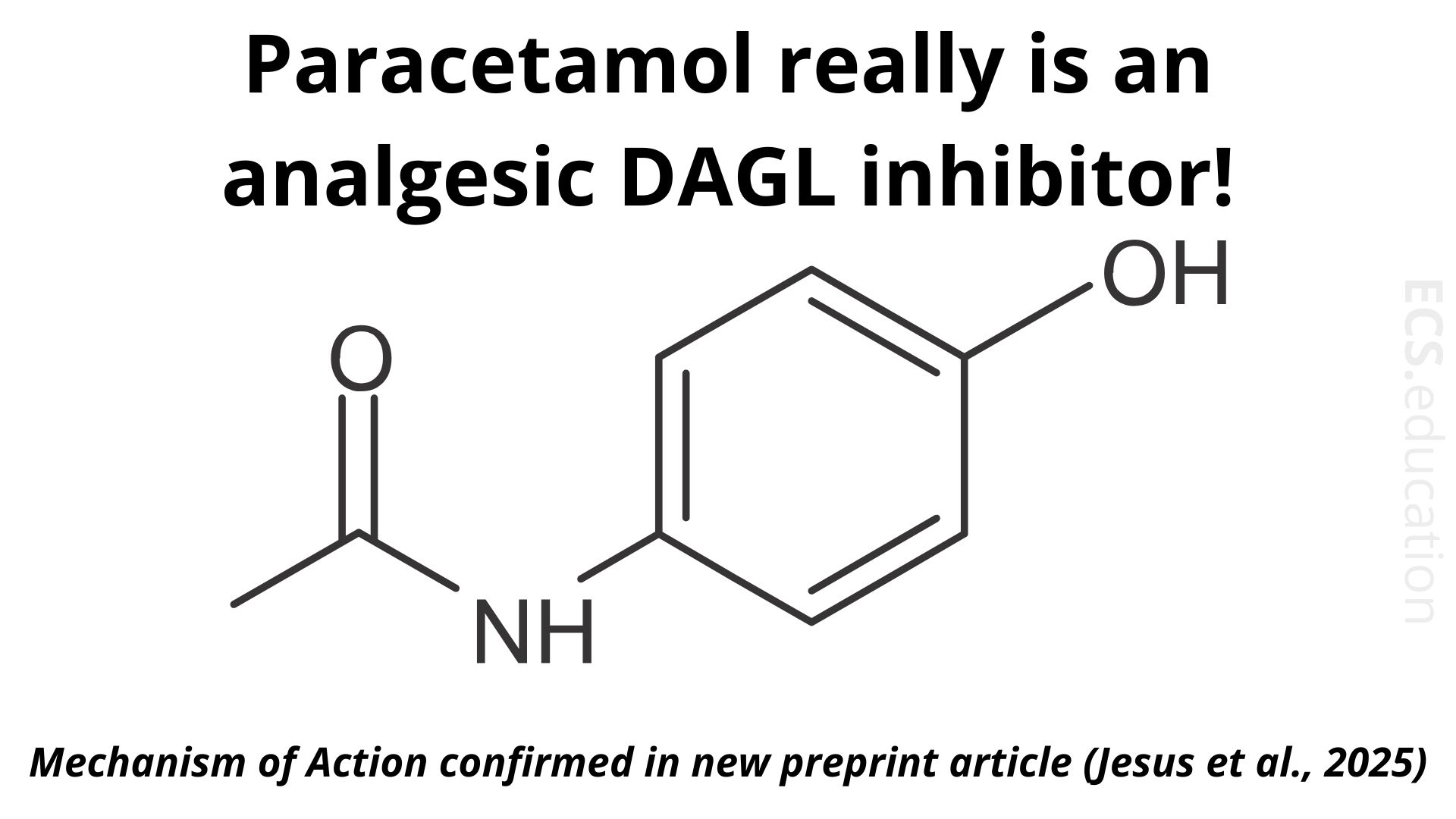Important Note: This blog post discusses findings from a recent scientific preprint, meaning the research has not yet been formally peer-reviewed. Preprints allow for rapid dissemination of findings, but results should be interpreted cautiously until confirmed by peer-reviewed publication.
Recently, we reported on a surprising new way that paracetamol (also known as acetaminophen) might relieve pain through the endocannabinoid system (ECS). Instead of the classic explanation focusing on its metabolite AM404 and anandamide, this research showed that paracetamol directly inhibits an enzyme called diacylglycerol lipase alpha (DAGLα). This inhibition reduces the production of an important endocannabinoid called 2-arachidonoylglycerol (2-AG), and, interestingly, this decrease in 2-AG was linked to pain relief. This finding marked a significant shift from previous theories.
Now, the story has gained even more support. A new preprint by Jesus CHA and colleagues, posted on bioRxiv in May 2025, offers independent evidence backing this DAGL-dependent, CB1 receptor-mediated mechanism of paracetamol’s action in models of pathological pain.
Their research confirms that the pain-relieving effects of paracetamol depend on the presence and function of CB1 cannabinoid receptors, aligning with the earlier study. More importantly, they show that the enzyme DAGL is essential for this analgesic effect, reinforcing the idea that paracetamol’s inhibition of DAGLα and the resulting reduction in 2-AG production plays a key role in its pain relief.
When two separate research groups come to similar conclusions, it strengthens our confidence that this novel pathway is real and important. While the AM404 metabolite pathway likely still contributes to paracetamol’s effects, these findings suggest that the parent drug itself can directly modulate the ECS by targeting DAGLα, offering a more immediate route for pain relief.
What’s particularly fascinating is the idea that reducing levels of a major endocannabinoid like 2-AG can actually relieve pain. This challenges the common assumption that boosting endocannabinoid activity is always beneficial for analgesia. Instead, it suggests that in certain pathological pain states, 2-AG acting through CB1 receptors might promote pain, and paracetamol helps by dialing down this signal.
This evolving understanding has important implications for the future of pain management. Different types of pain may involve different ECS imbalances, so knowing that paracetamol works by reducing 2-AG could help tailor treatments more precisely. Furthermore, by targeting DAGLα or specific parts of the 2-AG/CB1 pathway, we might develop safer pain medications with fewer side effects, like the liver toxicity concerns associated with high doses of paracetamol.
It’s exciting to watch science unfold in real time. This new preprint builds on very recent discoveries and allow us to paint a clearer, though more complex, picture of how paracetamol interacts with the ECS. This growing consensus around DAGLα inhibition and 2-AG reduction as a key mechanism underscores the dynamic nature of pharmacology and the expanding role of the ECS in health and disease.

